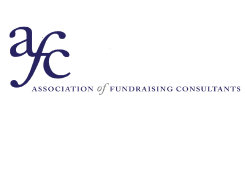The Challenges Facing Notre Dame de Paris
One week after we all saw the shocking images of Notre Dame de Paris engulfed in flames, hundreds of millions of Euros have flooded into a one-billion-Euro fund to repair the roof and spire.
The French government has pledged 40 million Euros but donations are also coming from billionaires, iconic French brands and, no doubt, many private individuals from around the world but controversy has already emerged almost before the clean-up begins.
As a fundraising consultant who has worked with a number of cathedrals, this is obviously a topic that is close to my heart and I therefore thought I would share some of my thoughts in this blog post.
Restore or remodel?
Firstly, there’s the question of what to do with the money. Various camps are emerging, one wanting to restore the cathedral faithfully to its former glory, down to the last detail (ironically the same aim as the restoration work which may have led to the fire). A further irony is that the cathedral, though built in the 12th Century, underwent a massive refurbishment in the 1840s to repair the damage inflicted by rioters and French revolutionaries. The spire which collapsed last week date from this period. So the alternatives are to simply repair the damage, create a modern building, or even take the opportunity to strip it back to the medieval original?
People before pews?
Secondly, some people are questioning whether the pledged money would be better spent feeding the poor rather than rebuilding a monument to the past. Not only does this ignore the symbolic importance of the cathedral to the nation but in my view it takes a simplified view of donation that assumes we have to rob Peter to pay Paul. Funds are generated by need so the money raised to restore Notre Dame is likely to be additional to, and different from any money raised to help the poor.
Your response to disaster
Launching a fundraising campaign to repair a cherished building, whether a grand cathedral, parish church, large public building or modest community amenity after an unexpected disaster throws up different challenges to a planned restoration project.
Buildings insurance will be important but the guardians of a structure also need emotional insurance. Have they ensured over the years that their building remains relevant and useful to the community in which it sits or have they existed in a private bubble so that local people question why they should now be expected to restore it?
Speed of action can also be important. The longer a structure remains unrestored, the more it degenerates and the harder it is to mobilise public sentiment.
Unity of purpose is also crucial among those responsible for the building. Work has barely begun on Christchurch’s Cathedral in New Zealand which was badly damaged in the earthquake of 2011, mainly because of wrangling over whether restoration should take place and how the work should be done.
For all these reasons it is important to have a clear vision of the work to be done, why, its cost and the benefits to the local community. As I have argued in a previous post, it’s crucial to have a business plan in place in order to achieve your goal.
Embracing an opportunity
Tragic though the damage or destruction of a revered and ancient building is, in the aftermath of disaster you have two choices: the first is to sink into despondency and mourn what you’ve lost and the second is to make the best of an opportunity to rebuild or rejuvenate an old building so that it survives into the future. Few if any of our great medieval churches have survived without some modification over the centuries.
No matter what is decided, perhaps the most important outcome is that people are reminded that the building they almost lost plays an important role in their lives and their sense of belonging to a place.
Stefan Lipa Fundraising Consultancy helps charities to meet their goals
Stefan Lipa Fundraising Consultancy helps charities to achieve their fundraising goals. We work in areas including heritage, religion, education, youth, culture, museums, theatre, music, health and community services.
We offer bespoke, impartial and honest advice with consultancy and management services for capital campaigns and revenue fundraising.
We work on projects with targets between £100k and millions of pounds, mainly in Hampshire, the Midlands and the south of England, providing accurate, impartial and frank assessments, every step of the way.
Our services include:
- Resources studies for capital campaigns
- An audit of existing campaign strategy to identify areas for improvement
- Strategic planning, capital campaigns, major gifts, revenue fundraising
- Trust, grant and Lottery applications
- Volunteer and staff recruitment, providing training to increase effectiveness
- Setting up in-house fundraising departments
- Charity management, advisory and support services to help you get the best out of your organisation and volunteers.
Free initial consultation
For a free, no-obligation initial consultation, contact the Stefan Lipa Consultancy or ring us on 01264 860003 to arrange a meeting.
To see previous blog articles please visit http://www.stefanlipa.co.uk/news/
You might also be interested to read another blog about Notre Dame that was put out by UKFundraising recently.
26.04.2019
For more information, call us on 01264 860003 or send an email.



